When you go to the magazine stand today, Hot Rod is one of the few automotive titles left. It continues to have a place in the North American (if not global) automotive consciousness, especially thanks to TV shows like Roadkill, so it’s amazing that a book on its history has not appeared until recently. Written by longtime automotive journalist and former Hot Rod editor Drew Hardin, Hot Rod Magazine: 75 Years is a title for anyone interested in the post-war era development of drag racing, NASCAR, the muscle car era, and beyond

It all began in the 1940s when a photographer by the name of Robert E. Petersen formed a PR agency with fellow refugees from Hollywood studios. One of their clients was the Southern California Timing Association (SCTA), an organization created to maintain a level of safety for both racers and spectators in dry lake racing. Petersen became responsible for selling advertising for the program of the SCTA’s First Annual Hot Rod Exposition and Automotive Equipment Display in 1948, so he traveled around Southern California visiting companies participating in the hot-rodding industry.
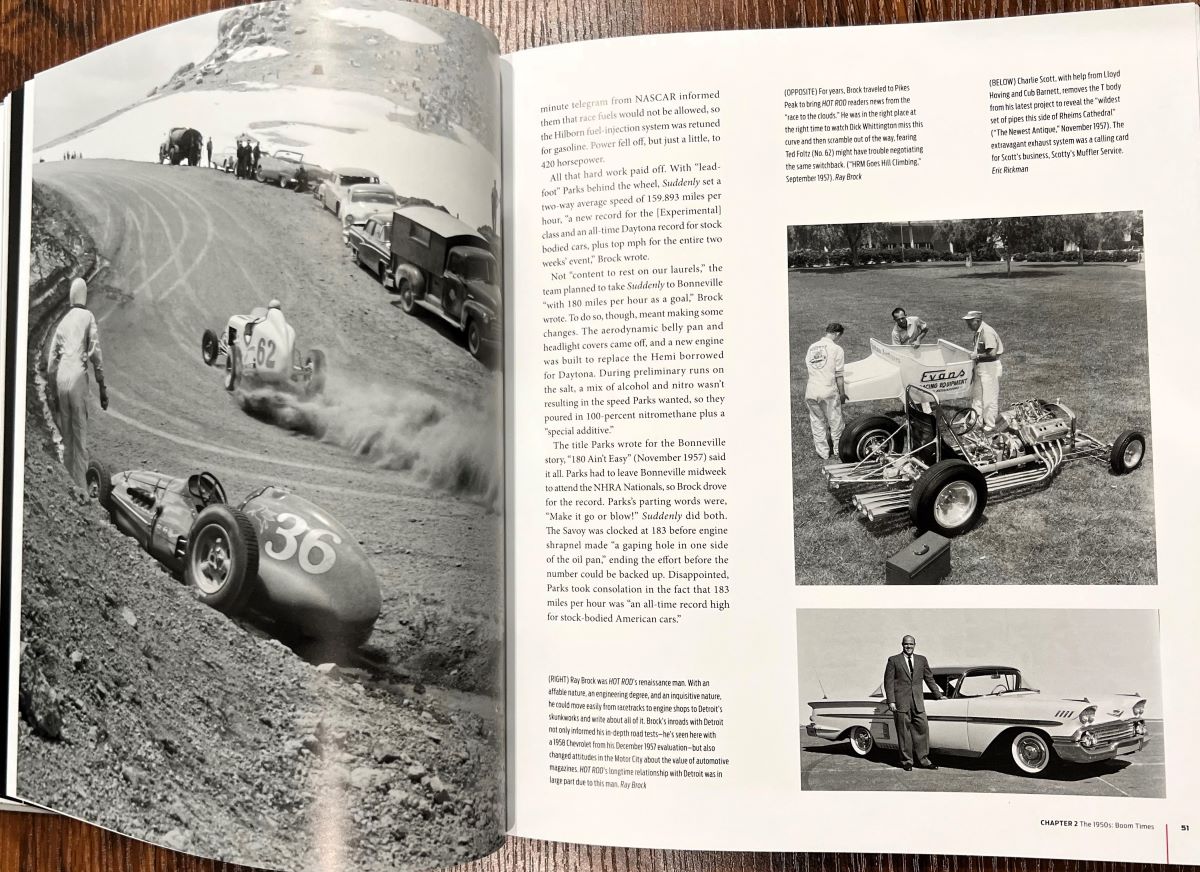
As he got to know the proprietors of the likes of Edelbrock, Weiand, So-Cal Speed Shop, and more, he realized there may be a market for a periodical catering to this segment of the population. In a column in the inaugural issue, a credo was laid out: “Hot Rod is designed to inform and entertain those interested in automobiles whose engines and bodies have been rebuilt for better performance and appearance.”
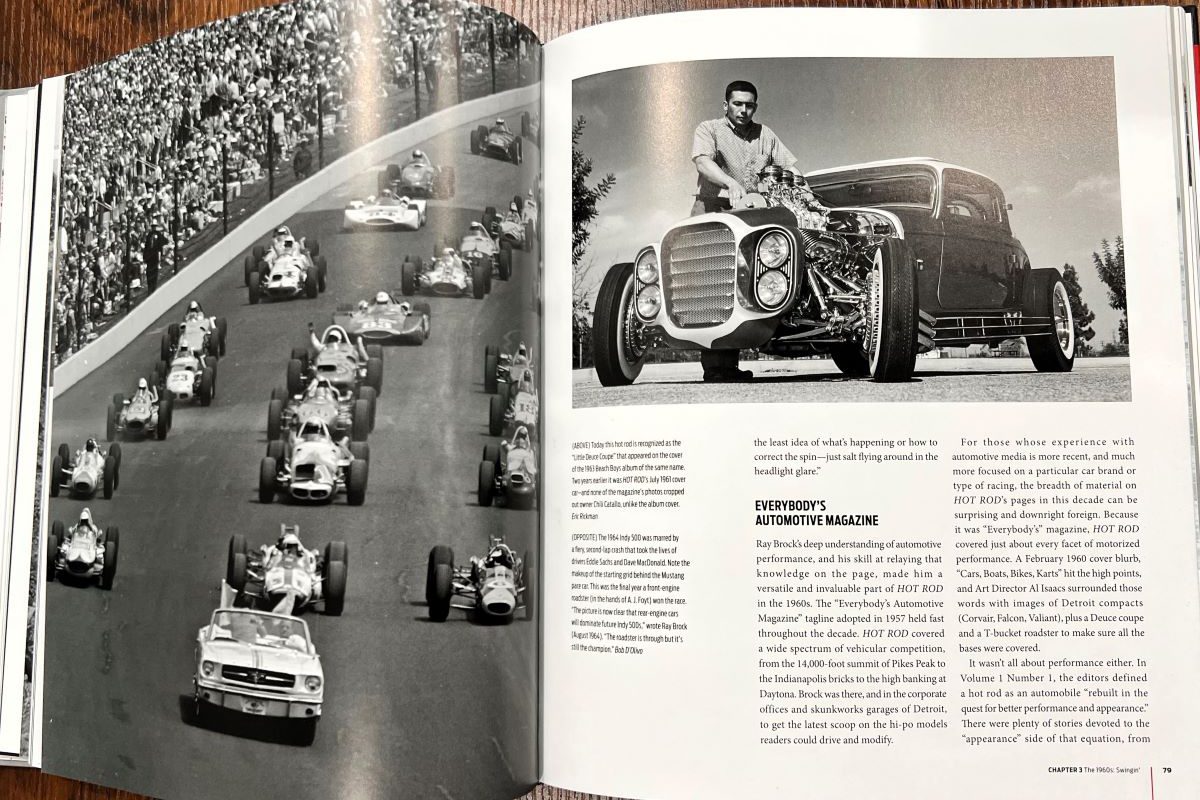
The 1950s were the “Boom Times” for Hot Rod. The magazine’s first editor, Wally Parks, formed the National Hot Rod Association in 1951 after recognizing the need for organization in hot rodding activities. Bonneville also was hot, with many racers starting to evolve into the OHV engines as the limits of Ford’s “Flathead” were becoming apparent. Then, in 1955, the unofficial “Horsepower Race” began in Detroit, with V8 power going from a class-based thing to more of an egalitarian thing as now all of the “Low-Priced Three” now offered V8 power. Of special note was Chevrolet’s embrace of performance thanks to engineer and future Godfather of the Corvette, Zora Arkus-Duntov.
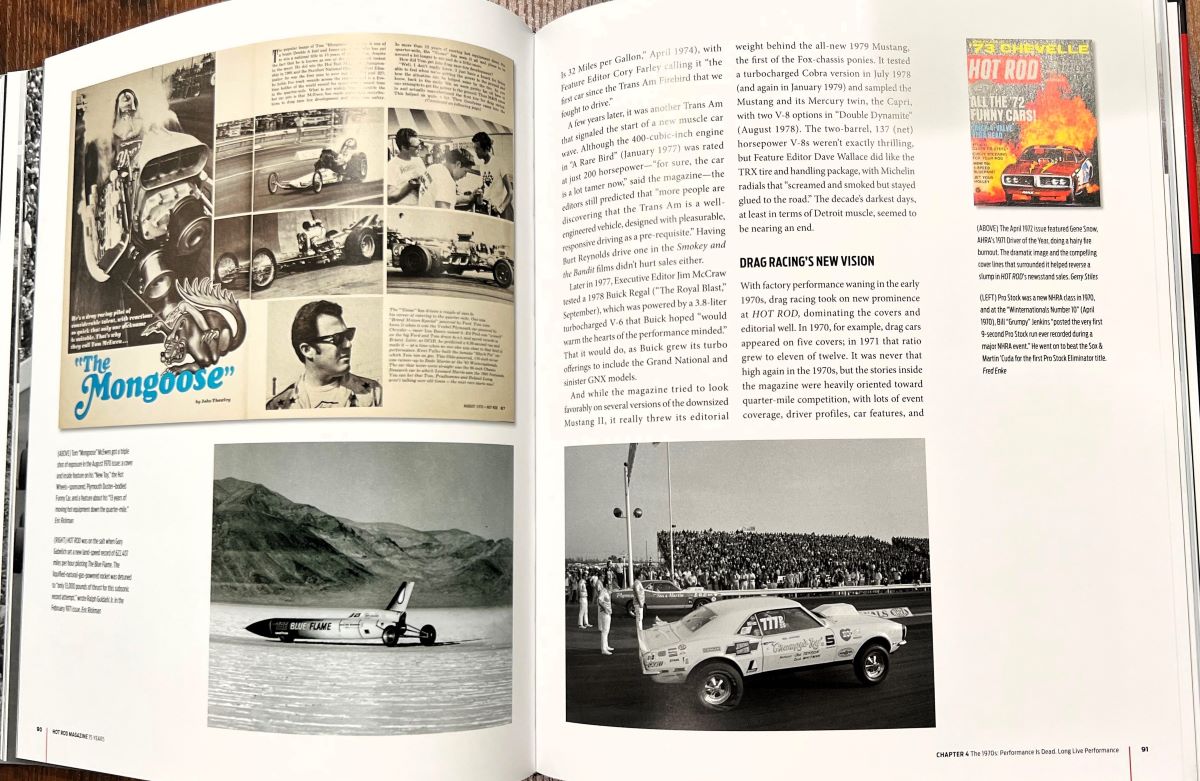
Like Rock ‘n Roll, automotive and hot rod culture joined 1950s popular culture and would only increase in recognition. Hot Rod Magazine: 75 Years tells the stories of the magazine, the industry, the automobiles, and the personalities involved, through thick and thin, up to the present day. Even the Malaise Era is not just given lip service — the whole history during the 1970-80s is written with the same respect and density as the heyday.
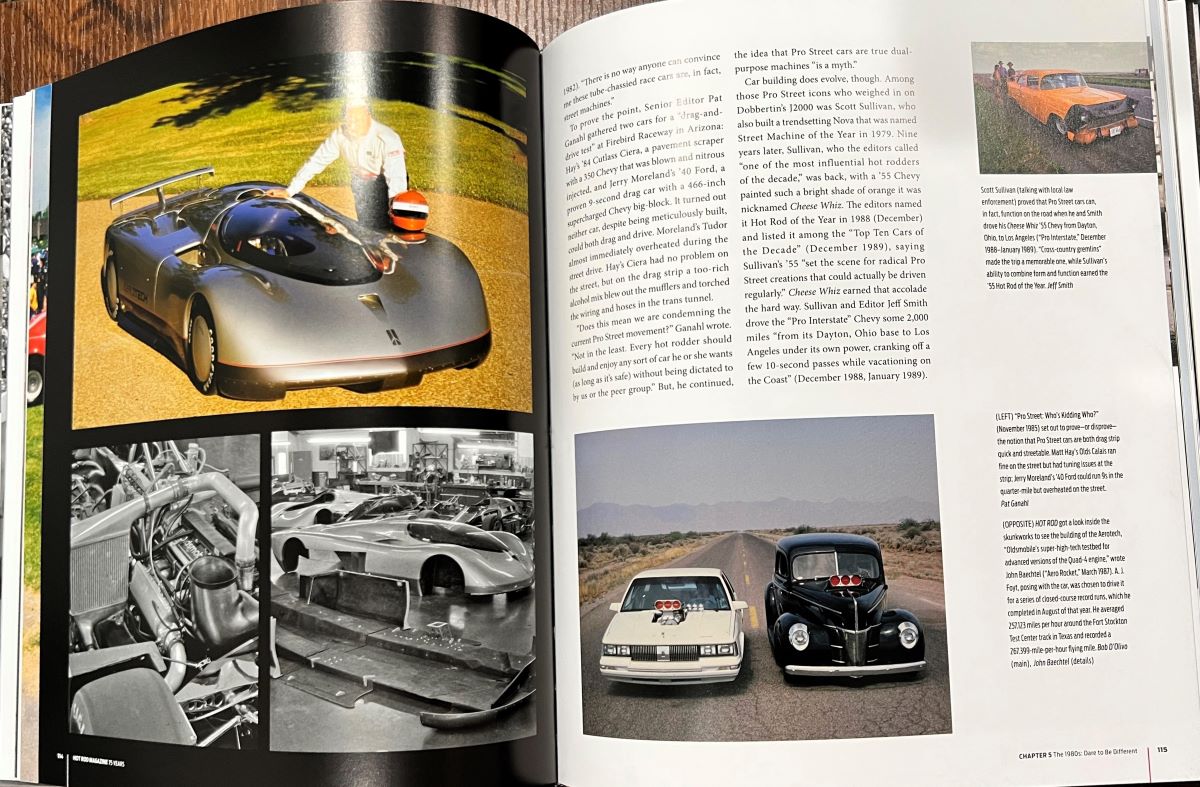
For anyone into American performance cars, Drew Hardin’s Hot Rod Magazine: 75 Years is seminal in tracing the lineage of hot rods and American high-performance, as well as the magazine being the beacon through it all. The book adds color and depth to the past 75 years in ways you simply can’t get from being a decades-long reader or collector of the publication. For the definitive review of the publication and American performance history, Hot Rod Magazine: 75 Years is essential.
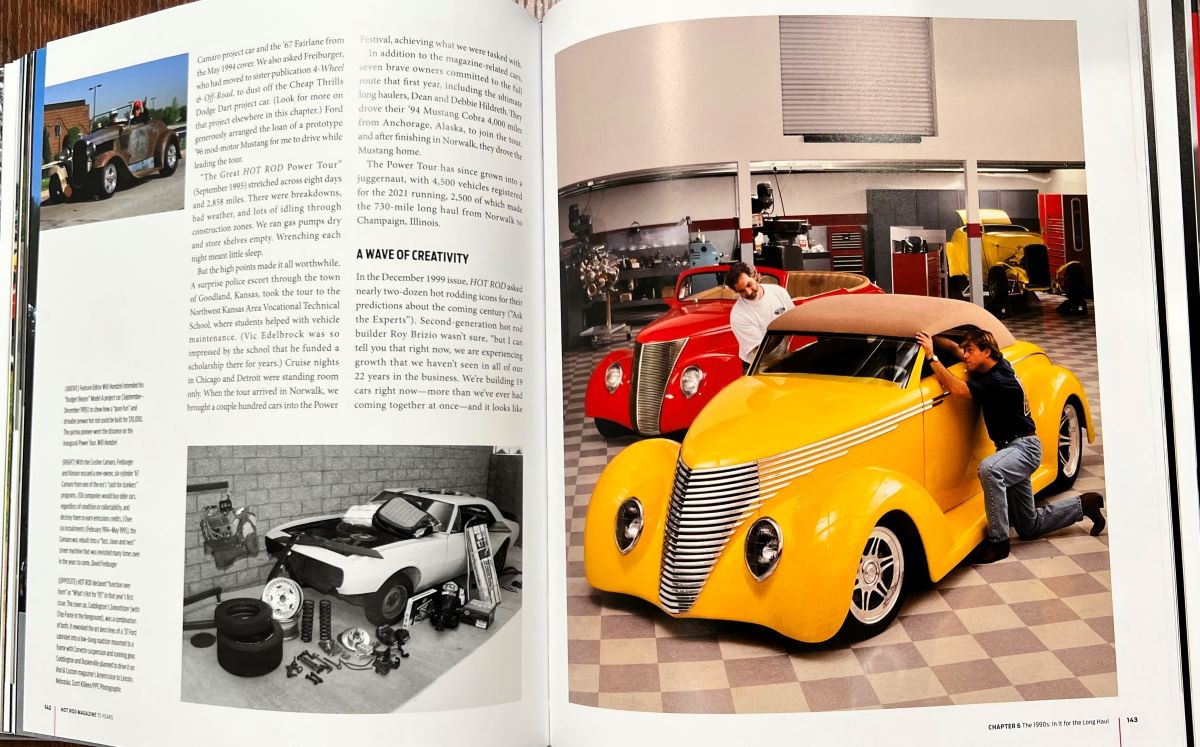
Note: The author of this review is a former Hot Rod staffer and has written for the book’s author. Every attempt has been made to remain objective.





